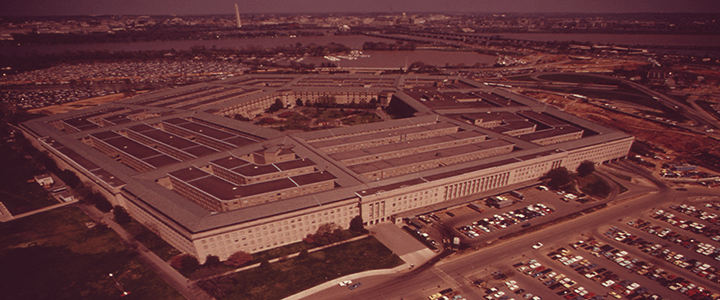Does the United States have the manufacturing capacity to sustain the armed forces in the event of a major conflict? On Friday, on the advice of his newly created Office of Trade and Manufacturing Policy (OTMP), the president put that question to the secretary of defense in an executive order that capped the “Made in America” week, an event the country largely ignored.
Citing “the loss of more than 60,000 American factories, key companies, and almost 5 million manufacturing jobs since 2000,” the order gives the SECDEF 270 days to produce a report that examines the defense industrial base and its supply chain, identifies weaknesses, and recommends legislative, regulatory, and policy changes to correct them.
The order directs the secretary to produce this report in conjunction with the departments of labor, commerce, homeland security, and energy, and after consulting several other federal agencies. This is a heavy lift; fortunately, the workforce – if not the leadership – to complete the task is already in place.
WE’VE GOT A GUY FOR THAT
The OTMP has only existed since April, and if the administration’s efforts to fill other vacancies across the federal bureaucracy are any indication, it likely has little staff beyond Director Peter Navarro, an economics professor who was one of Trump’s main advisors on trade issues during the campaign. Given the newness of the office, and the propensity within the West Wing to hire people with little to no actual experience in the federal government, it is tempting to assume the White House staff who produced this order don’t realize there is already someone who does this for a living.
The office of the deputy assistant secretary of defense for manufacturing and industrial base policy is a relatively obscure office within the office of the under secretary of defense for acquisition, logistics, and technology. MIBP is charged with, among other things, “anticipating and closing gaps in manufacturing capabilities or defense systems.”
True to form, though, the president has not yet named a permanent replacement to lead this office. Since the inauguration, the office has been led by Jerry McGinn, who had become the office’s principal deputy director in July of 2015. McGinn is a 1990 West Point graduate who holds a Ph.D. in history from Georgetown University. In addition to numerous defense industry posts, McGinn worked in the policy wing of the Department of Defense under President George W. Bush.
REPORT SHOULD LOOK TO EXPAND TITLE III
The president’s directive is supposed to be a more exhaustive look at the capabilities of American businesses to meet the challenges of future conflicts than the annual report to congress MIBP produces. The office completed its most recent assessment in March; it was released to the public last month.
Two of MIBP’s main public-facing efforts are the Defense Manufacturing Technology Program (ManTech) and the Defense Production Act Title III Program. Title III is something the president’s new initiative should examine more closely for ways to broaden in terms of reach and impact.
“There’s just one company in the U.S. that can repair propellers for Navy submarines,” OTMP’s Navarro told reporters on Friday ahead of the order’s release. Fortunately, Title III is designed either to ensure the one supplier stays in business, or that more suppliers add that capability. First among the program’s stated objectives is to “create, maintain, expand, protect, or restore the production capabilities of domestic suppliers whose technologies and products are critical to the nation’s security.” One would think that submarine propellers fall into that category.
Title III allows the government to issue sole-source contracts to defense suppliers in order to preserve manufacturing capability that might otherwise be lost due to inactivity, and to provide grants to companies to purchase new equipment to upgrade defense-critical manufacturing capabilities. It also identifies gaps in industrial capability and looks for ways to encourage industry to fill them.
For a program that aims to do precisely what the president is after, his budget request didn’t show the love. The president’s asked for just $37.4 million for the program, a reduction of nearly $26.7 million over the 2017 amount. Fortunately, the House has added $30 million back into the budget, for a total FY 2018 appropriation of $67.4 million.
Finding new approaches to governing is so difficult because given the sheer volume of things the federal bureaucracy already does (or tried to do, or has already tried). Novelty requires true innovation. The West Wing hasn’t shown us any of that so far.




